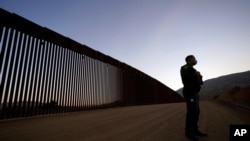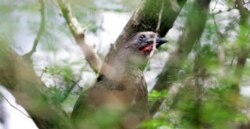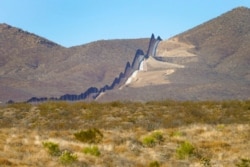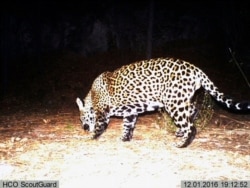On the day President Joe Biden took office, he put a pause on border wall construction, a centerpiece of former President Donald Trump’s immigration policy.
While the purpose of a wall at the U.S.-Mexico border is to keep criminal elements out and deter uncontrolled migration, environmentalists say an unintended consequence of a physical barrier is the devastation of borderland wildlife and its migration patterns.
Unintended consequences
Different versions of a border wall have been built since the Clinton administration, but construction of Trump’s border wall system, which included roads and lighting, has been especially detrimental to animal habitats, said Laiken Jordahl of the Center for Biological Diversity in Arizona.
“They have cut these just ghastly switchbacks into rugged mountains, into wilderness areas, just to access the places where they’re building the wall,” Jordahl said.
Aside from visible changes to the landscape, environmentalists are concerned about the greater impact of a physical barrier on wildlife, limiting the animals’ ability to move across the borderlands to find food, water and mates.
University of Arizona research scientist Aaron Flesch compared animal habitats to a string of holiday lights with bulbs of varying sizes and intensities. Some lights are small and dim, representing fewer resources, while others are bright, representing abundant food and water.
“Those small and dim lights might not be great habitats or great places, but they’re suitable for a few years here and there after a good rain or when resources are abundant … then they dim out,” he said.
Creatures can go locally extinct, he added, unless they are able to travel to other locations. A barrier, such as a wall, cuts the string of lights and can destabilize a population network.
“We don’t have great data and every species is different,” Flesch said, noting that because of a lack of funds, which often come from the government, there is scant information on the extent of the wall’s impact on animals that traverse the borderlands.
“It’s all happening without any environmental impact review or mitigation,” said Emily Burns, program director of the Arizona-based environmental group Sky Island Alliance.
The Real ID Act of 2005 allows the government to waive environmental laws at the border to construct barriers and roads, which also allowed the speedy construction of Trump’s border wall sections.
Environmentalists also worry about the construction projects that were left half completed.
“There are a lot of exposed slopes, potential areas where we could see a lot of erosion damage to water sources. There could be devastating impacts that could happen if these projects are left alone,” Burns said.
Where portions of the border wall have been completed, environmentalists are concerned that the lighting will disrupt the migratory routes of birds by hindering their ability to navigate. Any bright lights along the east-west border could misdirect north-south flying birds, said conservationists.
Meanwhile, on the ground, a wall “will actually cut the jaguars that are in the United States off from their breeding population in Mexico. It will strand these jaguars in the United States with no hope of them finding a mate, no hope of reproducing,” Jordahl said.
Finally, Burns noted that in many areas groundwater was pumped out for use in making concrete and keeping dust down on the roads. As a result, some of the springs have dried up, leaving no water for wildlife.
Border wildlife study
Since March 2020, Sky Island Alliance has been conducting a border wildlife study to monitor and gather more data on the animals that live and move in the U.S.-Mexico borderlands.
Forty-eight still cameras triggered by motion on the U.S. side and 20 cameras stationed in Mexico, plus additional video cameras, all capture the life of the animals in the area. So far the cameras have captured more than 12,000 images of 104 species of animals.
“We will now be looking to see — are those species gone? Have they had to move to other places? What happens adjacent to this construction zone?” asked Burns, who said the research project would go on for at least the next two years.
Biden administration’s next steps
Biden’s proclamation ending the declaration of an emergency at the southern border and suspending wall construction directed the heads of several agencies to “develop a plan for the redirection of funds concerning the southern border wall.”
The language in the White House proclamation, however, did not address the environment or ecological restoration. There is also uncertainty about what happens with wall construction after the 60-day review period, at a time when the U.S. is seeing a surge of asylum-seekers and migrants attempting to cross the border through official and unofficial routes as well as continued smuggling of people and narcotics across the border.
Biden’s proposed immigration bill calls for supplementing “existing border resources with technology and infrastructure,” which includes “funding for plans to improve infrastructure at ports of entry.”
Burns said her hope is that any funding allocated for the border “can go toward changing the wall structure” to include removal of the barrier and investing in restoration.
“People are the one species that are going to be able to go over this wall in most contexts, because we’re tool users and because we’re pretty smart people,” Flesch said. “A first-century technology is not the solution for a 21st-century problem.”












